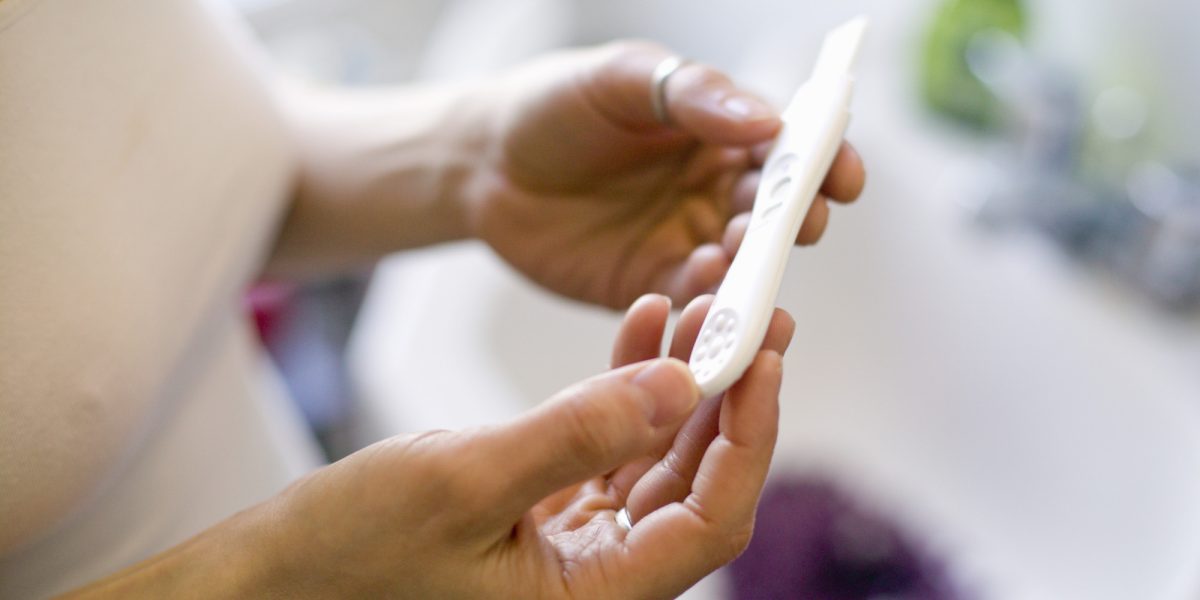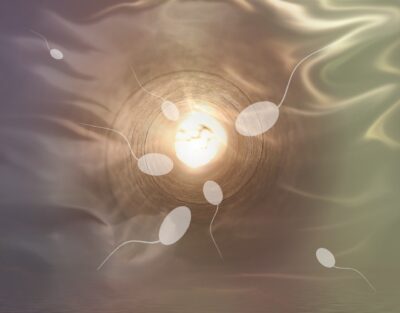
US NEWS, June 6, 2012
By Chai Woodham
Girl meets boy. Girl marries boy. Girl and boy have a baby. For many folks, this is how they envision their life will be—or at least some sort of semblance of these milestone events—but for a large number of people, this has become an unattainable reality. According to the Centers for Disease Control and Prevention, about 7.3 million women between the ages of 15 and 44 suffer from infertility, which is defined as the inability to get pregnant after six to 12 months of trying. And while a woman’s increasing age is the most familiar reason for this condition—more and more women are waiting to have children—researchers are discovering that there are new and once-unconsidered factors at play. And men are not exempt from this pregnancy problem, as one-third of infertility issues stem from the male partner. Here are some of the latest findings and what doctors say you can do in response to them.
Move in moderation and watch your weight. We all know that movement does the body good, but recent research suggests that too much of a good thing can be a hindrance. A study published in March in Fertility and Sterility revealed that normal-weight woman—those with a body mass index (BMI) under 25—who engaged in vigorous exercise like running, swimming, and aerobics for five or more hours a week were 42 percent less likely to get pregnant than women who did not exercise at all. “Very vigorous exercise can affect ovulation, and thereby disrupt menstrual cycles,” says Jessica Scotchie, a reproductive endocrinologist practicing in Chattanooga, Tenn. “The pituitary gland interprets the strenuous exercise as meaning that this is not an optimal time to further stress the body with reproduction, and thus shuts down the signaling to the ovary to promote ovulation.” Researchers also add that extreme exercise could affect implantation, a fertilized egg’s ability to attach to the inside of the uterus.
The same study, though, found that this high-intensity exercise had no impact on conception for overweight or obese women. In fact, it may be beneficial, as obesity is linked to significantly higher rates of infertility. “Obesity is associated with high sugar levels, which promotes elevated insulin secretion from the pancreas. causes increased testosterone production from the ovary, resulting in irregular menstrual cycles,” explains Scotchie.
Although the study did not analyze men, doctors say the correlation between obesity and infertility in males is no different. According to Zamip Patel, an andrologist at Florida Hospital in Orlando, “The problem with moderately to obese patients is that fat cells contain aromatase. some of the testosterone they produce is being converted to estrogen, and that is artificially telling the pituitary gland that there is too much testosterone. The pituitary responds by telling the testes to decrease the production of testosterone, thus decreasing the amount of sperm that is produced.”
Apparently, less-intensive exercises like walking, leisurely cycling, and gardening are good for everyone. The Fertility and Sterility study showed a slight increase in fertility rates in women of all body types who engaged in moderate activities for any length of time. Given the exercise level of the average woman, says Scotchie, exercise for 30 to 60 minutes a day is unlikely to have a detrimental impact on the ability to conceive. In fact, “it’s more likely to help with weight loss or maintenance, which helps conception and ensures a more healthy pregnancy.” And, adds Patel, “the key is a slow burn, since too rapid a weight loss can decrease sperm counts.”
Cut back on caffeine. A lot of us like an extra cup of joe or can’t resist that supersized soda, but if you’re trying to get pregnant, it’s usually a good idea to say no. “There appears to be an association between excess caffeine intake and infertility, miscarriage, and pregnancy complications,” says Serena Chen, director of reproductive medicine at Saint Barnabas Medical Center in Livingston, N.J. A lab study on female mice—they’re reproductively similar to humans—published in 2011 in the British Journal of Pharmacology discovered that caffeine (the equivalent of two cups of coffee) reduced the muscle activity in the fallopian tubes, which aids in the transport of a woman’s eggs from her ovaries to the womb. The caffeine caused the muscle contractions to lax, so much so that the eggs couldn’t move.
Other studies have also demonstrated a link between caffeine and infertility. A report published in 1998 in Reproductive Toxicology revealed that women who drank between 300 to 700 milligrams of caffeine a day suffered a 12 percent lower chance of achieving pregnancy. Drinking even more lowered the chance of conceiving by 37 percent. And in 2008, Dutch researchers announced that in their study of nearly 9,000 women with fertility issues, those who drank four or more cups of coffee, or some other kind of caffeinated drink, on a daily basis were 26 percent less likely to get pregnant. “We’re relatively conservative and recommend a limit of 50 mg of caffeine a day,” says Chen, “which means one 6-ounce cup of brewed coffee or two teas. Decaffeinated drinks should be okay, but the healthiest thing to drink is water, and lots of it.”
Go gluten-free. “A little-known cause of infertility in both men and women is celiac disease or gluten sensitivity,” says Trudy Scott, a certified nutritionist based in Rancho Cordova, Calif., and author of The Antianxiety Food Solution. Celiac disease, an autoimmune disorder triggered by a reaction to gluten, a protein found in wheat, rye, and barley, was diagnosed in over 5 percent of women suffering from unexplained fertility in an infertility clinic, says a study published in 2011 in the Journal of Reproductive Medicine. Another 2011 research report in the Journal of Obstetrics and Gynaecology Research found a greater prevalence of celiac disease in infertile couples than in couples reporting no reproductive problems.
Women with celiac disease often suffer from menstrual disorders such as secondary amenorrhea, where a woman who typically has normal menstrual cycles experiences a prolonged absence of her period. Conditions like this can lead to fewer ovulations. And men with celiac disease may have lower testosterone levels and abnormal sperm. “Gluten issues should always be considered as just one of the many factors that can contribute to infertility,” says Scott.
Avoid mercury. If you’re fond of fish, you might want to think about what kind you eat. In 2002, the British Journal of Obstetrics and Gynaecology published a study showing that among a group of 150 infertile couples, over a third of the men had abnormally high concentrations of mercury in their blood, while 23 percent of the women did also. The study was done in Hong Kong where consumption of seafood from polluted waters is high. “Fish can be eaten in moderation and does have health benefits, including providing omega acids, but we advise women to avoid fish at the top of the food chain such as shark, tilefish, and mackerel, ” says Scotchie.
Trim the fat. According to a new study published in March in Human Reproduction, among the men surveyed in a fertility clinic, those who ate the most saturated fat had 35 percent fewer sperm than men who ate the least. Saturated fat is found in foods such as processed meats, butter, and dairy. Says Jill Attaman, a fertility specialist at Darmouth-Hitchcock Medical Center in New Hampshire and lead author of the study: “The magnitude of the association between saturated fat intake and sperm concentration is quite dramatic.” The good news, the study shows, is that men can improve their sperm quality by eating omega-3 fatty acids, which can be found in foods such as cold water fish, flax seeds, and nuts or supplements, says Attaman.
So what foods should both men and women trying to conceive eat? Julie Matthews, a certified nutrition consultant based in San Francisco and author of Nourishing Hope for Autism, suggests a diet containing lots of vegetables, grass-fed animal meat and milk, whole-fat milk, pastured eggs, fruits, nuts, and whole, gluten-free grains.
Chen recommends The Fertility Diet, a book that’s based on a landmark Harvard collaboration on women’s health known as the “Nurses’ Health Study.” Data from that epidemiological study has shown that fertility foods for women include vegetable proteins like beans, peas, and nuts; extra iron from plants such as spinach, tomatoes, and beets; unsaturated vegetable oils from seeds and fish like salmon and sardines; whole milk; and carbohydrates rich in fiber like whole grains and fruits. And avoid sugary drinks like soda and artificial sweeteners, says Chen.
Know your body. “Endometriosis is a condition in which cells that are normally found in the uterus grow outside the uterus instead,” says Lynn Westphal, associate professor of obstetrics and gynecology at the Stanford School of Medicine. Pain is the most prevalent symptom, whether it’s painful periods, pain during or after sexual intercourse, pelvic pain, or pain with a bowel movement. Some 8.5 million women in North America suffer from the disorder and typically experience symptoms for a full decade before diagnosis. It is also one of the top three causes of infertility, according to the Endometriosis Foundation of America. If you suffer from this condition, Chen advises seeing a reputable, board-certified reproductive endocrinologist for advice, “so that you can make an informed decision.” A solution like surgery may contribute to infertility, as it can cause injury to the ovarian reserve.
Follow the sun. Then there are those factors you may have never imagined: In addition to your biological clock, think about the circadian one. Frequent long-distance fliers like female flight attendants and night-shift workers such as nurses have been shown to have fertility and menstrual issues, as they are often out of sync with the external light cycle. A lab study on female mice, published in the May issue of PLoS One, draws a direct correlation between a disruption in the circadian clock, the internal timekeeping mechanism that tracks the time of day, and pregnancy outcomes. In the control mice—those that experienced a normal setting of 12 hours of light followed by 12 hours of darkness—90 percent of the matings led to successful pregnancies. The mice in the most manipulated group had their 12 hours of light start six hours earlier every five days. Only 22 percent of those females went on to have full-term pregnancies. “The circadian disruption may have induced issues with fertilization, implantation, and/or early establishment of pregnancy,” says Keith Summa, coauthor of the study and a graduate student in neuroscience at Northwestern University. “We did not anticipate such a dramatic impact.”
When all is said and done, to ensure optimal fertility, people should adopt behaviors “that we should be doing anyway to keep ourselves healthy,” says Chen. Stop smoking, manage your stress, eat a healthy diet, be a healthy weight, stay active, and get seven to eight hours of sleep. Women should take 400 micrograms of folic acid a day. And men, says Patel, “should abstain from saunas and hot baths, which increase testicular temperature and may lead to testicular dysfunction. Abuse of drugs like narcotics and marijuana can decrease sperm counts through hormonal pathways. And some sexually transmitted diseases can exacerbate or lead to infertility.”
Says Chen: “We know that well over 90 percent of couples who seek treatment for infertility are eventually successful, yet 50 percent of people who suffer from infertility are afraid to seek help.” Take charge and talk to your doctor.



